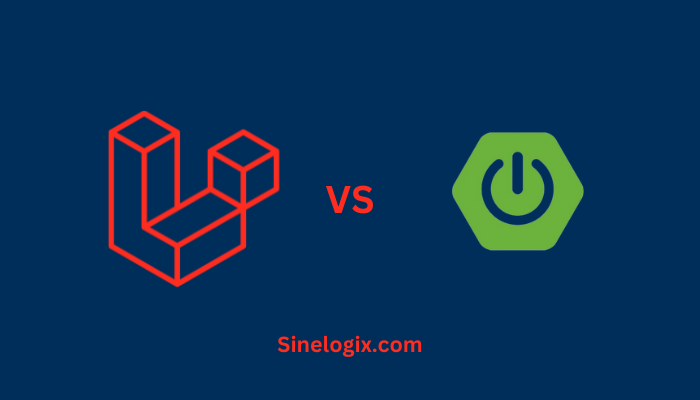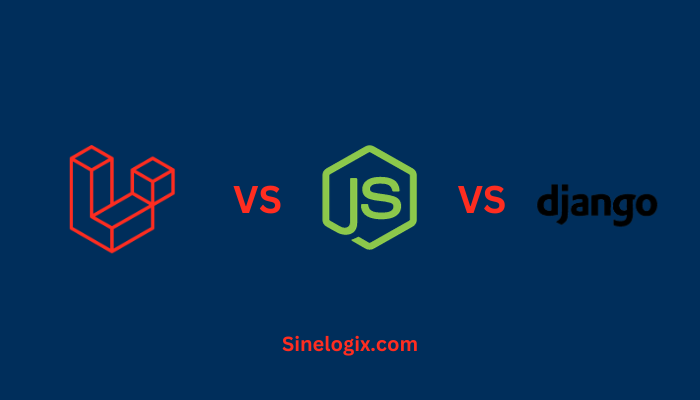Laravel and Spring Boot, two robust frameworks, cater to the distinct needs of web developers working in different technological landscapes.
Laravel, a PHP-based framework, and Spring Boot, a Java-based framework, have both garnered significant attention for their features, performance, and developer-friendly environments.
In this exploration, we’ll delve into various aspects of Laravel and Spring Boot, highlighting their strengths, use cases, and considerations for developers navigating the diverse world of web development.
Overview of Laravel and Spring Boot
Laravel: Renowned for its expressive syntax and developer-friendly features, Laravel is a full-stack PHP framework following the MVC (Model-View-Controller) pattern. It offers a comprehensive ecosystem, including an elegant ORM (Object-Relational Mapping) system, Blade templating engine, and tools for tasks like routing, authentication, and testing. Laravel prioritizes rapid development without compromising scalability and maintainability.
Spring Boot: Part of the broader Spring Framework, Spring Boot is a Java-based framework designed to simplify the development of production-ready applications. It embraces convention over configuration, offering a wide range of features for building enterprise-level applications. Spring Boot emphasizes modularity, allowing developers to choose and integrate only the components they need for their projects. It excels in building scalable and maintainable Java applications.
Language and Ecosystem
Laravel: Built on PHP, Laravel leverages the simplicity and ubiquity of this server-side scripting language. The PHP ecosystem, supported by Composer for package management, provides Laravel with a wealth of third-party libraries and tools. Laravel’s ecosystem facilitates rapid development through features like Artisan, a command-line tool for automating tasks, and a variety of Composer packages.
Spring Boot: Spring Boot, being Java-based, harnesses the power of the Java ecosystem. Java’s vast community and mature ecosystem contribute to the strength of Spring Boot. Maven and Gradle serve as build tools, allowing developers to manage dependencies efficiently. Spring Boot’s ecosystem includes the Spring Data for data access, Spring Security for authentication and authorization, and other modules that enhance its functionality.
Architecture and Design Philosophy
Laravel: Laravel embraces the MVC architecture, emphasizing a clean separation of concerns. The framework follows an opinionated approach, providing conventions that enhance developer productivity. Laravel’s design philosophy prioritizes expressive syntax, developer happiness, and the creation of elegant and maintainable code.
Spring Boot: Spring Boot also adopts the MVC architecture but offers a more modular and flexible approach. It encourages developers to use components that suit their project requirements. Spring Boot’s design philosophy revolves around convention over configuration, reducing boilerplate code and allowing developers to focus on business logic.
Learning Curve and Documentation
Laravel: Laravel is known for its developer-friendly syntax, making it accessible for PHP developers. The documentation is comprehensive, offering guides, API references, and tutorials. Additional resources like Laracasts provide video tutorials, further aiding developers in learning the framework. Laravel’s community engagement contributes to a supportive learning environment.
Spring Boot: Spring Boot has a steeper learning curve, especially for those new to Java development. The documentation is extensive, providing detailed information on various aspects of the framework. Spring Boot’s official guides and the Spring community forums are valuable resources for developers seeking assistance. While the learning curve is higher, the modular nature of Spring Boot allows developers to gradually adopt and learn specific components as needed.
Community and Support
Laravel: Laravel boasts a large and active community, contributing to its growth and improvement. The Laravel community provides forums, third-party packages through Composer, and regular updates. The community’s engagement and the framework’s popularity ensure ongoing support and a wealth of resources for Laravel developers.
Spring Boot: Spring Boot is backed by the extensive Spring community, renowned for its enterprise-level Java development expertise. The community actively contributes to the framework’s development and provides support through forums and documentation. Spring Boot’s popularity in enterprise settings ensures a robust ecosystem and continuous community-driven improvements.
Performance and Scalability
Laravel: Laravel offers good performance for PHP applications and is suitable for a wide range of projects. Its scalability is enhanced by features like caching, queuing, and optimized database queries. Laravel Horizon, a dashboard and queue manager, aids in efficiently managing scalable applications.
Spring Boot: Spring Boot, being Java-based, is known for its performance and scalability, particularly in enterprise scenarios. Java’s mature ecosystem and Spring Boot’s modular design contribute to building scalable and maintainable applications. Spring Boot’s support for microservices architectures further enhances its scalability.
Middleware and Request Handling
Laravel: Laravel’s middleware system provides a flexible mechanism for filtering HTTP requests. Developers can use middleware to perform tasks like authentication, logging, and modifying incoming requests. This feature enhances Laravel’s ability to handle various aspects of request processing.
Spring Boot: Spring Boot’s middleware-like functionality is achieved through filters and interceptors. Filters allow developers to perform actions on requests and responses, while interceptors provide a way to process requests before they reach the controller. Spring Boot’s approach to request handling is flexible and customizable.
Database Integration and ORM
Laravel: Laravel’s Eloquent ORM simplifies database operations with an expressive syntax. It allows developers to interact with databases using object-oriented methods, making it easy to perform common tasks like querying and updating records. Laravel’s database migration system further streamlines schema management.
Spring Boot: Spring Boot integrates with various data access technologies, including Spring Data JPA for ORM. Spring Data JPA simplifies database interactions, allowing developers to use repositories and domain classes. Spring Boot’s support for multiple databases and flexible configuration options enhances its database integration capabilities.
Template Engine
Laravel: Laravel employs the Blade templating engine, known for its simplicity and readability. Blade supports template inheritance and allows developers to create modular and reusable views. Laravel’s approach to templating contributes to the framework’s focus on clean and maintainable code.
Spring Boot: Spring Boot typically uses Thymeleaf as the default templating engine. Thymeleaf is a modern server-side Java template engine that is integrated seamlessly with Spring Boot. It supports natural templates and promotes the creation of well-organized and readable views.




